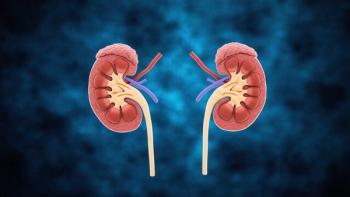
Dialysis Industry Is Now the Most Concentrated in Healthcare, Study Finds, With Prices Far Higher in Monopoly Areas
Physician ownership of facilities and joint ventures with major chains also increased substantially from 2005 to 2019.
With the two largest dialysis chains, DaVita Inc. and Fresenius Medical Care, now owning nearly 80% of facilities in the United States, academics, advisory groups and regulators have all called for an analysis of the industry’s growing consolidation, including the influence of physician medical directors and owners. But they’ve been hampered by a lack of data.
A new “economic evaluation” that relied on more than 10 data sources, including two obtained through Freedom of Information Act requests to identify physician owners and medical directors of hemodialysis centers, provides some of those numbers.
The
More recently, according to the study, the largest dialysis chains have enhanced their financial ties with doctors by offering ownership stakes in facilities and paying substantially higher salaries to serve as medical directors.
Among the specific findings reported by corresponding author
- Between 2005 and 2019, a period when both DaVita and Fresenius made several large acquisitions, their combined market share increased from 59.1% to 77.1%, while the share owned by independent facilities decreased from 20.4% to 10.6%.
- In 2019, 32.5% of the national population lived in a hospital service area without access to a dialysis facility other than DaVita or Fresenius, including 99% in the state of Minnesota.
- The share of facilities with a physician owner increased from 11.4% to 29.1% over the study period. The average owner of a DaVita facility owned 2.8 DaVita facilities and no others, while the average owner of a Fresenius center owned 4.19 Fresenius facilities and virtually no others.
- The portion of physician-owned facilities that are jointly owned by chains, referred to as joint ventures, increased from 4.6% in 2005 to 23.7% in 2019.
- Markets served only by one large chain had $495 higher average commercial prices for outpatient dialysis and $565 higher medical director compensation per patient than markets that did not have large chain facilities.
Much of the consolidation in dialysis has not been subject to antitrust review, the paper notes, partly because a key federal statute, the Stark Law, which explicitly prohibits physicians from referring patients to entities in which they hold a financial stake, exempts freestanding dialysis facilities. Two recent challenges to the high prices set by DaVita and Fresenius — one from an employee health benefit plan that reached the Supreme Court and the other a ballot initiative in California — both lost.
Previous research, the study points out, suggests that high commercial rates are not due to higher-quality care, as quality at independent facilities was found to have decreased after acquisition by a large chain.
“With better access to data on the identities of medical directors and owners of dialysis facilities,” they conclude, referring to their own findings, “regulators and patient advocates will have a better understanding of how care might be influenced by these relationships.”
Newsletter
Get the latest industry news, event updates, and more from Managed healthcare Executive.






















































